Steve Porcaro is from a prominent musical family in Los Angeles. His father, Joe Porcaro, was a first call studio percussionist, and he raised his sons to follow his lead as a committed artist, and musical craftsman.
Growing up in this kind of state-of-the-art popular music environment that LA has been since the dawn of the Wrecking Crew exposed Steve to all the latest trends and gear, and led him to synthesizers very early in his musical life. In fact, Steve was a pioneer user in the commercial synthesizer world. The instruments he has owned and mastered could be a museum of the history of this category. And, after mastering the intricacies of hardware sequencers, he was one of the first successful artists to jump feet first into the world of software recording.
What made this particular interview so much fun was getting reacquainted with Steve. As a former user of Opcode Systems' products we found him to be professional, enthusiastic, and very helpful with feedback on Opcode products. That enthusiasm for everything has not diminished a bit with Steve over time.
It was also a pleasing coincidence that his interview followed the one with Roland's founder, Ikutaro Kakehashi, because it is a nice example of the artist side of the artist/product visionary collaboration.
Did you have formal training when you were starting out as a musician?
I had a lot of training. My dad taught drums for many years. He was working in the studios with all these great keyboard players, and a lot of them would have kids who wanted drum lessons, so they would barter. My dad would teach their kids drums and they would teach me piano. Sometimes I would even take from two different teachers at the same time just because I liked how different they were from each other. I was a horrible student. Most practicing was torture for me.
Any particular favorite teachers come to mind?
Tons. There was a guy named Clare Fisher, who's no longer with us. Clare did the strings for Prince, and Rufus back in the day. He was an amazing keyboard player. He got me into the whole concept of "Hemispheres" - the independent thing that drummers learn to do, which really helped me doing the multi- keyboard stuff. There was also Pete Robinson, Victor Feldman, and Charlie Shoemake.
When you started, what were the keyboards you used the most?
Anything I could get my hands on. I got my very first organ when I was 10 or 11 years old. It was this Rheem portable organ, from the people that make water heaters. Several years after that, when my folks realized how committed I had become, my dad got me a Farfisa organ. It had that real wheezy sound. I wanted a Hammond really bad. I loved the buttons and the knobs on the Farfisa, but the sound of a Hammond with a Leslie, I was going for that sound.
What about synthesizers?
In 1969, I became aware of Switched-on-Bach and some other things, and I remember thinking, "Where are these cool sounds coming from?" I immediately bought that record and found out. But when I first saw Keith Emerson live, in 1971, it really brought it home for me. I was like, "I want to do that."
Once for a school gig I rented an ARP Odyssey, which I'm sure I paid more than I was getting for the gig. Just had to have a synth. I just did some machine gun style noise things, sweeping the filter or something. I didn't know what the hell I was doing, but I had a synthesizer.
When I got my drivers license, my dad got me a job sweeping up at Paul Beaver's studio, He was "the guy" in LA if you wanted a synthesizer, like the portable modular Moogs that were starting to appear in the studios. One of his guys, Phil Davies, started showing me some basics. He would put me in front of a modular Moog with some headphones, and let me have at it. I had no idea what I was doing.
What did you use when you were touring with Toto in the early days?
In the early days, it was my Yamaha CS-80, my trusty Minimoog, Oberheim DS-2 sequencer and not much else. Very soon afterwards, the band bought me a Sequential Circuits Prophet 5 and it started building from there. Yamaha GS-1, and an Emulator shortly after that.
Back in the day, when I was recording I was always thinking, "How am I going to pull it off live?" I'd be notating how I got that sound—I did three DX7s with modifications and this going to this, and a little bit of that. I'm trying to library all of these sounds, so when it's time to do it live, I was like, "I can't use seven synthesizers just to get one sound live." I wound up just having to wing it.
I had to bring a lot of keyboards on the road to try to emulate what I did on record. There would be many racks and all kinds of stuff offstage. I had my Jupiter 8s, Emulators, CS-80, GS-1. We were using these Sycologic MIDI interfaces. It was complicated, and very difficult to keep track of.
Recently, when I started touring with the band again, I didn't want to deal with a massive setup. So I decided to check out Apple's MainStage, and it was exactly what I had always hoped for, because I'd been in Logic for quite a while by then. So I was using the sounds in live performance that I was using on the records. Now it's with just a laptop next to myself and David running MainStage. Both David and I have two full custom Mainstage systems put together with our tech, Jordan Rippe.
What particular plugins are you using that emulate the older instruments you were using for the original songs?
I've been using the stock Logic synths, like the ES2, which is Logic's standard poly synth. Whether it was for those kinds of pad sounds or even Minimoog sounds, I put it in mono mode, and I'm able to get the sound and do my Portamento and things I would do on my Minimoog. But also Aruria for all kinds of emulations, and of course everything Spectrasonics makes is a gold standard. I also use a lot of Native Instruments stuff.
Believe me, there's people that'll come up and say, "Man, you're wussing out. Come on, man. You've got to have a Hammond up there." But many of Toto's fans are in Europe or Japan, and trying to get the equipment over there is a huge thing to consider.
What synths did you use on the Thriller album?
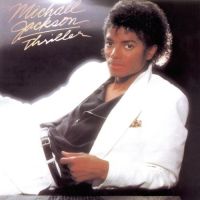 I had a Yamaha GS1. It was the FM synth that preceded the DX7. There was a lot of Minimoog. I had my Prophet 5 and two Jupiter 8s. I remember the Jupiter parts very well because they were the very last things we did. They had me listen to the songwriter demo for The Lady in my Life, and I could hear the Jupiter 4 preset that (songwriter) Rod Temperton had used. I was experienced enough to know when songwriters get married to their demo sounds. I tried it with "better" synthesizers, but it was never quite the right sound for him. Good lesson: Better isn't always better.
I had a Yamaha GS1. It was the FM synth that preceded the DX7. There was a lot of Minimoog. I had my Prophet 5 and two Jupiter 8s. I remember the Jupiter parts very well because they were the very last things we did. They had me listen to the songwriter demo for The Lady in my Life, and I could hear the Jupiter 4 preset that (songwriter) Rod Temperton had used. I was experienced enough to know when songwriters get married to their demo sounds. I tried it with "better" synthesizers, but it was never quite the right sound for him. Good lesson: Better isn't always better.
The GS-1 was magical. It had Poly Aftertouch, like the CS80 did, which I loved. It was a little wonky because you could hear the increments if you were controlling the volume, but overall, it worked amazing. It was very cool.
There's the signature ostinato pattern at the beginning Human Nature.
Yea, actually that was a Jupiter 8 being played by my Roland MC4 sequencer. David Paich came up the idea and we wrote it out and I programmed it into the Roland Microcomposer.
Part of it was being in the right place with the people. David Foster was a producer I'd been working with a lot in LA, and he knew that I had just gotten this thing called a MicroComposer.
Video of Steve discussing the writing of Human Nature
How did you get into sequencing in the first place?
The two guys that taught me the most about synths were Ralph Dyck and Roger Linn. Really at the time, I just wanted to have a sequencer that could do block harmony. I wanted to do multiple channels of what I was doing with my Oberheim DS2, and I knew how to write stuff out. So I got this, thinking it would be as easy, and it wound up being this beast to learn. And on top of it, you needed 8 Minimoogs. That's why we got all of the Polyfusion hardware. I just wanted 8-voices. There was an interface that had the eight CV and gate outputs that went to the synths.
So, you named things...?
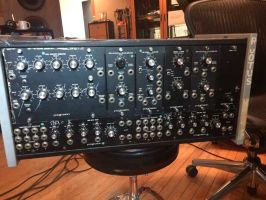
Roots - The sound of
Dirty Laundry...
Yea, we started giving equipment names, especially the Polyfusion stuff, so the guys who move my equipment would know rack of modules I wanted. I would say, "Bring me Ramses" and they would know I wanted that left, top rack. I used "Rootus" on Dirty Laundry with Don Henley. Paich has always called his Hammond A-100 'Aristotle'.
Anyway, I'm pounding my head trying to figure out how to work all of this stuff, and out of the blue, David Foster calls me up one day and says, "Have you ever heard of a thing called a Roland MicroComposer?" And I said, "Yea, I'm pounding my head against the wall right now trying to figure out how to work mine." And he goes, "This buddy of mine from Canada is the guy who invented it."
So Ralph Dyck came over and we became fast friends. Not only did he teach me how to work the MC-8, he helped me with electronic music in general, with synths—he just became a very, very close friend. He played some jazz and he built his own synthesizer.
Ralph is also the first guy that came up with the FSK sync tone, because that was the whole thing. It was for hobbyists. When you bought an MC-8, they didn't expect you to buy Roland's huge modular system. What they expected was guys that had a 2600 or their Minimoog, and you'd sit there with your 8-track or your 4-track, reel-to-reel, and you would overdub. You'd use the voltage control to control not just notes, but all kinds of different stuff. And you could overdub, because it had this thing that allowed you to sync with tape, called Frequency Shift Keying - FSK tone. It's what the Linn Drum and Oberheim, Roland and everyone used. Ralph Dyck is the one who came up with that as far as I know.
SMTPE generators were hard to find and hugely expensive in those days...
SMTPE was still only the AES world. My brother (Legendary studio drummer Jeff Porcaro) didn't want to play to a click track. His time was so good. So, I'm in a band triggering sequences, and the drummer won't play to a click. Ralph saw what I was dealing with and he came up with the idea of a sync box that would have a very accurate "tap tempo" feature, where you could input a live click into the box and it would interpolate quarter notes and spit out FSK sync so all the sequencers and drum machines would follow the input in real time.
He brought the idea to a mathematician friend of his in Canada by the name of Peter Dunik The guy came up with a solution and Ralph made this box for me using a wire-wrap, that worked incredibly. It also had a "tape mode," that I used live in the studio to sync up.
So on our third album, we experimented with it, and there was a song called Gift with a Golden Gun and it was one of those things where we took a drum track that already existed and made a sync track after the fact. Anyway, that's how I got in with Quincy and those guys too, having secret black boxes like this. No one else had one at the time.
Any particular thing you remember about working with either Quincy Jones or Michael Jackson?
There's so many. Michael was very hands on, and approachable. We wrote a couple of songs together. What was so fantastic about working with Quincy was there was always a groove. In those days, studio time was super expensive, so if you were there working and it's not happening for some reason, the stress level in the studio could get really high. With Quincy, everything was always happening. He might erase your parts two seconds after you walked out of the door, but while you were in there, everything was a groove. And it brought out the best in you.
And believe me, Quincy was very businesslike and it wasn't some crazy '80s scene where money was going out the window. Quincy kept tight reigns on his sessions and his productions. There wasn't any fooling around. He knew that if this guy doesn't get it, someone else will.
Is there anything you miss about the "good ole days?"
At this point it's which "good ole days" (Laughs). I liked being able to deliver finished synth parts with a room full of people - Producer, engineer, second engineer, artist (s) - it could be daunting and very high pressure, but when you got something everybody loved, very satisfying.
All I wanted then, though was to have my own studio and be by myself, without having everybody leaning over my shoulder. And I've had that for many years, but these days, I find myself looking around kind of going, "Where is everybody? I want some feedback on this right now." I miss the camaraderie and everyone getting together in one place.
How often does that happen nowadays?
It's very rare, but is, in fact, how I'm working with Toto right now. It's been a great combination. We get together and look at a song and knock around ideas and try putting a few things against the track. When we get a good idea of what I do, they leave me with it, to dial it and record it. It's been working out great.
Let's talk about Dune...
Dune was a really fun nightmare. It's one of those things in this business, if it ended up being this classic movie, it would've been the smartest thing we'd ever done. We were right off of Toto IV, and the record had won seven Grammys. We had just done a world tour. We took this long break and lost our lead singer.
And then the movie Dune was offered to us. The guys in the band grew up going to the midnight shows of Eraserhead and knew exactly who David Lynch was. It was this $40 million movie, which in those days is like saying it was a $200 million movie.
So that was the first time you were involved with a film score? I mean Toto was making pop tunes, and all of the sudden you're in a linear thing making a film.
Oh yea. With David Paich in the band we had some musical depth—his father (Marty Paich) is an orchestrator and arranger and conductor, so it wasn't totally foreign to us, and we had a lot of support from our friends. We weren't actually doing the scoring and spotting session and going through it scene by scene. It was just kind of a weird experience.
But that didn't ruin your interest in doing film.
No, not at all. If anything, it peaked it. In '87 or '88 I had done well with "Human Nature" and some other things. Nirvana was really popular, and all of a sudden bands with one keyboard player were unpopular, let alone two keyboard players. And the guys would talk about how we've got to get more roots and rock 'n' roll, and less orchestral synths and all that stuff. And that synth stuff was what I lived for, so I felt it was a good time for me to go. Quite frankly no one said, "Oh, Steve, don't go." And I had two brothers in the band at the time. (Laughs)
So I started working with my friend James Newton Howard, whose film career was taking off. I had been working with him, and one day he turned to me and said, "Do you want to try doing writing to film?" I had never had to write music on a deadline. Toto would take nine months to make a record. But James encouraged me and within a week, I had a TV show called the Sentinel.
I learned to love having a deadline. I realized it's more about going to work everyday and that the stars didn't always need to be aligned for me to write a song. I started learning from people like Randy Newman. You know, when they're writing for an album and they've got their piano and their cassette and their legal pads and pencils. They bring their lunch, get an office, rent a piano, and go to work 9-5.
Do you have any stories of working with musical instrument manufacturers over the years?
I had one of the first Emulators. Don Henley bought it for me, for my work on Dirty Laundry. The early Emulators only sampled for two seconds. And then it would go into these ugly, static sounding loops, but I had my Jupiter 8 string sound.
I had read enough books on musical physics to know that the attack is how you can tell the difference between being a trumpet and a violin, and analog synths couldn't do particularly well. So, I'd use the attack of my Emulator, and the sustain and release of my Jupiter. I had JC Cooper mod on the Emulator that enabled me to set the sustain of the amp env to 0. So when you hit a key, it'd play a nice chunk of just the attack and then it'd go to nothing.
Roland's founder Ikutaro Kakehashi came to my studio with his lead engineer at the time. I had this set up like a cockpit, so I went around and showed them. Not only did I have real string samples, but I had a motorcycle revving its engine, and I added that to my bass analog string sounds, with no attack at all on it. I had this great bow digging in real deep, along with my beautiful sustained string sound.
And a year later, David Paich and I run into him at the airport in Amsterdam, and he says, "Wait until you see my new synth. I think you're going to love it." And it was the Roland D-50, which is pretty much exactly what I had shown him—with the attack and snippets of samples at the attack of the sound. Just like what the Korg M-1 wound up being. These little bits of sampled attack, which is exactly what I showed him.
Mister K did take us for a delicious eel lunch when we visited the factory way back when, and has always been a sweetheart when I would run into him at NAMM shows.
What do you use for your DAW these days?
I primarily use Logic. Pro Tools is still the king, but I'm waiting for them to get their MIDI together. Toto hooked up with C. J. Vanston who produced and engineered the last album in Logic. We mixed it and did all the demos straight into Logic and those became masters and we just added real drums and finished the vocals.
So, I did my first solo album in Logic. People did tracks in other places and would send me the files. It was time to mix and my original plan was to hire C. J. to mix because he had just done it for us in Toto. Well, he was busy and couldn't do it.
So here I am in the heart of LA looking for someone who knows how to mix in Logic. You know how many other guys I came up with? Zero. Now, I'm sure there are some out there. Pro Tools is still the king as far as most engineers I know are concerned. I don't care how much Apple gives it away.
What did you end up doing?
I worked with a guy named John Paterno. I do so much film work, and I'm used to making stems—so I just kind of premixed my stuff. I had to go through every song and prepare it to be mixed in Pro Tools. So he just had single tracks, all the way across, of everything in my song. So he just brought it all up and added his whatever and did his thing. He wound up doing a great job. I was very happy.
Any particular favorite plug-ins you've been using recently?
Yea, I love NI Komplete, and all that stuff in there. Action Strings The vibraphone thing I've used quite a bit. Kinetic Metal has got that weird broken clock thing and some cool stuff in it. All of this Evolve Mutation stuff, I've used that in my film stuff quite a bit. And then Spectrasonics stuff. I'm installing Keyscape as we speak.
I always feel like I'm catching up. The more complicated and hipper these things get, the more commitment of time it takes to actually use them.
What do you think of where things are headed?
Here's the big thing—back in those days, me being the synth guy. I would get my new version of Opcode's Studio Vision and I'd pull out my notebooks and write Opcode with lists what features you needed to have for the next version. And I'd get like five of them filled (laughs) and I'd be ready to send it and I'd get an update in the mail. And sure enough, more than half of the stuff that was in them was already done.
So the point I'm trying to make is, in the old days, I felt like I was a musician in the trenches, and I felt like instrument companies should listen to me, because I knew how it should be. But then I realized it wasn't like I was coming up with ideas for some amazingly creative techniques or features that no one else was thinking about. I didn't need to be the one to stop working and tell Opcode what they should be doing.
It really kind of hit me. I started realizing, you know what, concentrate on your songs and your music. These guys have got it covered.
I've always been, when it comes to technology, one of those "keep the change" guys. Yea, I've worked on 2 inch tape for 100 years, and I've engineered myself and I know what it's like to hit two inch tape nice and hard, and what comes back and how great that is. But, at the end of the day, with digital, I'm like, "keep the change." The advantages far outweigh the reasons we cling to what's familiar. For me. I just want to get as much music out there that I can.
Steve Porcaro now spends his time doing film and television scores, while occasionally touring the world with Toto. He recently released Someday/Somehow, his first solo album.
facebook.com/steveporcaromusic

Find Mini V4 in the KVR Marketplace

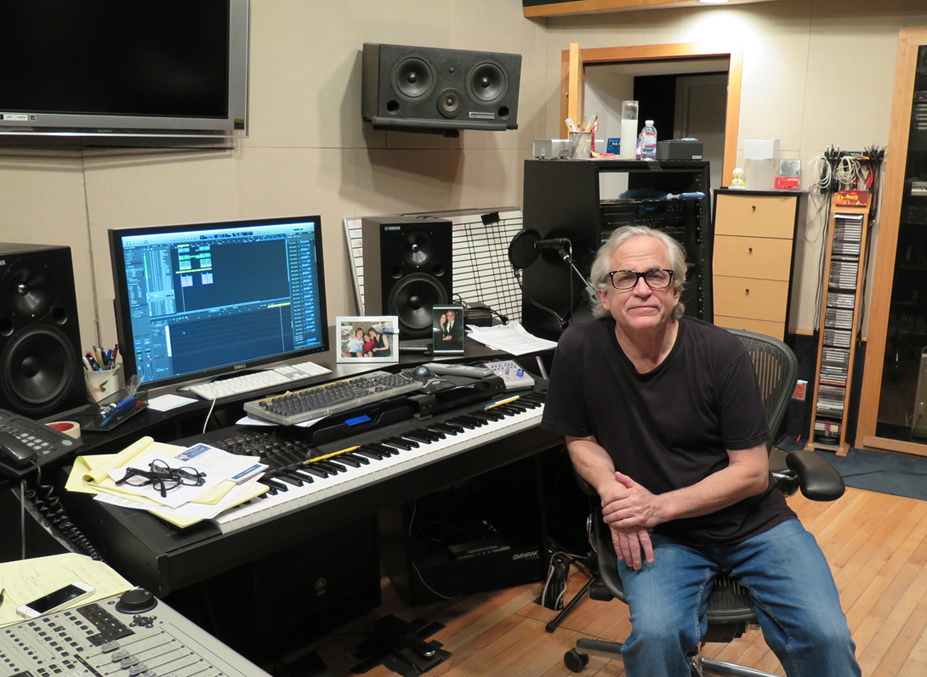

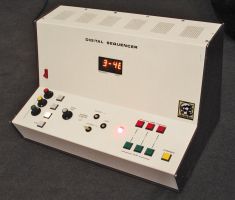
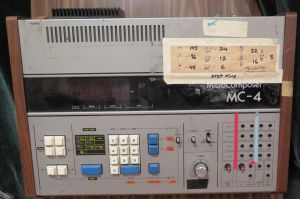
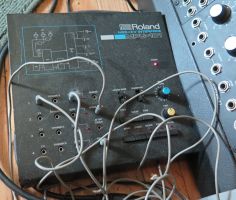
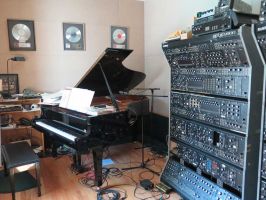
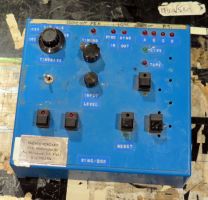
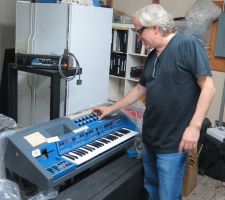

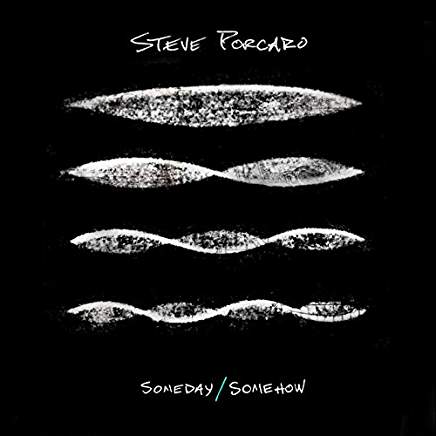


 Other Related News
Other Related News
